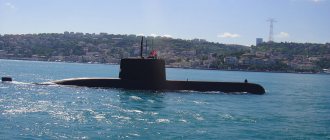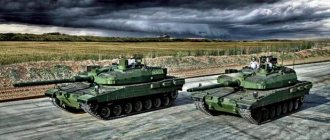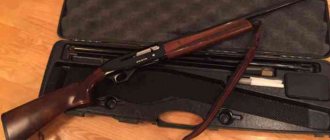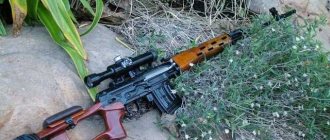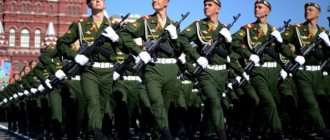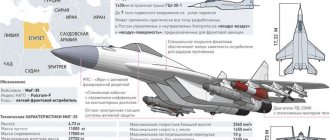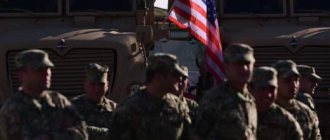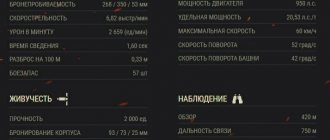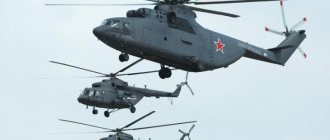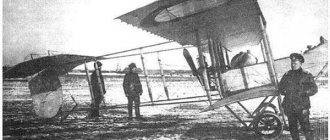Currently, it is no secret that relations between Russia and Turkey, which have been built for centuries, have undergone serious changes. They then worsened to the limit and improved significantly in the conditions of the emerging military-political situation in the Middle East region. This is largely due to the worsening international situation. However, the large-scale military-political knot that has emerged from the Middle East to Ukraine and the growing ambitions of post-Kemalist Turkey may further unravel and turn into a center of military confrontation. The military-political course of the Turkish Republic is determined by its geostrategic position at the junction of Europe and Asia, membership in NATO, relations with leading world powers (primarily the USA, European states and Russia), as well as its role in the Islamic world and the desire to assume functions a mediator in resolving regional problems and establishing an “intercivilizational dialogue” between East and West. At the same time, the main goal of Turkey’s military-political course is to build up the country’s military potential to a level that ensures internal political stability and the implementation of strategic national interests, the main of which are the country’s transformation into one of the political and military leaders in the Middle East and Southern European region. Achieving this goal is ensured by the special role of the armed forces in NATO and in the political life of the country, maintaining a high level of military spending (about $10 billion), expanding and deepening military-political ties with both NATO countries and China [1].
Throughout its history, Turkey has fought with Russia 12 times, not counting local military conflicts. The last time was exactly 100 years ago, during the First World War. Turkey's destruction of the Russian Su-24 bomber caused a sharp response from Russia, which began to introduce economic restrictions, expressed in a ban on holidays in this country, as well as serious restrictions on Turkish business. Moreover, many experts began to talk about the real danger of a direct military clash. In light of this, it seems relevant to compare the potentials of the Russian and Turkish armies.
The total number of Turkish armed forces is currently about 410 thousand people, and this is the second largest army in the NATO bloc after the United States [2].
As for defense spending, according to some reports, despite the partial secrecy of information about Ankara’s military budget, in 2015 military spending amounted to $22.6 billion, with an upward trend. The figure of 22 billion is about 3% of the total GDP of the Turkish state. 20–25% of the defense budget is spent on modernizing the armed forces and providing the army with new types of weapons. Turkey's expenses per serviceman are significantly less than Russian ones and amount to about 44 thousand dollars per year.
Russia's spending on the Armed Forces is $84.5 billion, and this is the third largest expenditure on the army in the world (after the United States and China). At the same time, Moscow is actively re-equipping its army and navy, the program of which was adopted at the beginning of the new term of Russian President Vladimir Putin several years ago and is designed until 2020.
In recent years, Russia has been intensively increasing military spending. With a population of 146 million people, Russia has 771,000 soldiers and officers in military service (as of 2015) and a reserve of two million. Spending per serviceman is about 110 thousand dollars per year.
Ground forces of Russia and Turkey
Russia and Turkey do not have a land border. To reach each other, the parties need to cross the sea.
The general operational management of the ground forces is carried out by the commander, who is appointed at a meeting of the Supreme Military Council of the country and approved by the President. He reports directly to the chief of the general staff and is responsible for the construction, recruitment, combat training and logistics of the ground forces. The commander exercises leadership over formations, formations and units through the headquarters of the ground forces (Ankara). In wartime, gendarmerie troops are transferred to operational subordination to the commander of the Army [3].
The number of Turkish ground forces is quite high - more than 410 thousand people. It is armed with 3,778 tanks, including 400 Leopard 1s, 300 Leopard 2s, and more than 1,000 M-60s, which can fight Russian T-72, T-80 and T-90. There are also field artillery guns, mortars and multiple launch rocket systems - more than 6,000 pieces (among them 800 MLRS), more than 4,000 anti-tank weapons, about 2,000 man-portable anti-aircraft missile systems, more than 5,000 armored vehicles.
However, a considerable amount of equipment is outdated, including the Leopard 1 tank, which has already been removed from service by the main “users”, primarily Germany. The hope of the Turkish ground forces now is to develop its own Altai tank with a 120-mm cannon, which, however, has not yet been put into service, and its testing is being delayed.
Turkish ground forces are subordinated to four army and nine corps directorates. In addition, there is a separate command for Northern Cyprus.
The Turkish ground forces include 1 tank division, 7 tank brigades, 2 mechanized divisions, 14 mechanized and motorized brigades, two artillery brigades, and Turkish special operations forces of 5 brigades.
Turkey's artillery is quite powerful and numerous, and includes more than 1,100 self-propelled guns, more than 760 trailed guns and about one and a half hundred MLRS.
The number of Russian ground forces currently amounts to 450 thousand people.
The Russian Ground Forces are equipped primarily with Russian and Soviet-made equipment and include towed and self-propelled artillery, multiple launch rocket systems, tanks, armored personnel carriers, infantry fighting vehicles, self-propelled anti-tank systems, air defense systems, anti-aircraft missile systems, etc. As for tanks, Russia's main battle tank at the moment is the T-90 in various modifications.
Currently, about 550 T-90A and T90-AK tanks are in service, while the Russian ground forces have about 4,500 T-80 tanks, many of which are currently undergoing major overhauls. There are also more than 12 thousand T-72 tanks at the storage bases, which can be reactivated at any time. In total, the Russian Ground Forces have 15 thousand tanks in service.
At the same time, the T-90 main battle tank is superior to the main tank of the Turkish armed forces “Leopard 2” (and even more so the outdated, but most widely used “Leopard 1” tank in the Turkish army) in many characteristics, including armor-piercing power. At the same time, next year the Russian army will receive new Armata tanks, and by 2020 it is planned to supply more than 200 units of this newest Russian tank to the troops.
The Russian ground forces have 4,600 units of towed artillery, 6,000 units of self-propelled artillery, as well as 3,700 multiple launch rocket systems. In addition, the ground units of the Russian army can hope for 30 thousand armored vehicles (infantry fighting vehicles, armored personnel carriers, etc.)
The basis of the striking force of the Russian Ground Forces is 3 tank brigades, 35 motorized rifle brigades and 7 special forces brigades. They are supported by 9 artillery and 4 rocket artillery brigades. The elite Taman and Kantemirovskaya divisions also retained their divisional structure, and the peacekeeping 201st motorized rifle brigade was preserved. In addition to the ground forces, the Airborne Forces also underwent reform, retaining their divisional structure and turning them into permanent readiness units. Currently, the Airborne Forces include 4 divisions, a separate assault brigade and a special forces regiment.
The Ground Forces (not counting equipment in storage) currently have more than 2,500 tanks (mostly various versions of the T-72), more than 18 thousand armored combat vehicles, including new items like the BMP-3. The artillery unit consists of 1,820 self-propelled artillery guns, 550 trailed artillery, about a thousand self-propelled mortars (the well-known Nonas) and more than a thousand different MLRS.
Thus, if the number of Russian Ground Forces is not much higher than the number of soldiers in parts of the Turkish army, then in terms of weapons (tanks, infantry fighting vehicles, artillery) Russia has an overwhelming superiority.
Turkish armored vehicles in the "Source of Peace".
On October 9, 2022, the official Turkish government announced the start of an operation codenamed “Source of Peace.” Its goal is to occupy the Syrian territory bordering Turkey, which is controlled by Kurdish armed groups. After the official announcement of the start of hostilities in the territory controlled by the Syrian Democratic Forces, the Turkish armed forces began to launch artillery and air strikes. Also, the Kurdish self-defense forces started fighting with the forward detachments of the “Syrian National Army” supporting Ankara, but the Turkish army still did not use its main trump card - powerful armored formations.
This article is devoted to an overview of Turkish armored vehicles, their combat use both in past conflicts, and possible options for use in Operation Peace Spring.
The Turkish army is one of the most powerful armed forces in the Middle East. One of the most important parts of this force, undoubtedly, can be called Turkish armored vehicles. Tanks and armored personnel carriers, in cooperation with other branches of the military, have more than once enabled the Turkish leadership to successfully complete their tasks. However, this type of military had its own problems. Thus, Turkey is armed with several types of “main battle tanks”, which differ in both combat capabilities and countries of origin.
One of Turkey's main battle tanks is the American-made M60 tank. Various modifications of this combat vehicle still serve in many units of the Turkish army, including the M60A3, which is, perhaps, one of the main “workhorses” of the Turkish army.
One of the first large-scale combat uses of the M60A3 by the Turkish army in recent years was the “Euphrates Shield” operation carried out in 2016 in northern Syria against militants of the terrorist organization ISIS, banned in Russia. Turkish armored forces operated here together with various pro-Turkish Syrian factions. This was done in order not to put our own infantry at risk by using a conglomerate of various militants as cheap cannon fodder. At the same time, Turkish crews had to control and fight tanks. However, poor interaction with Syrian militants, underestimation of the enemy and the lack of serious combat experience among Turkish troops soon began to manifest themselves.
On August 27, an M60A3 was destroyed by fire from Islamist anti-tank crews. The tank's lack of dynamic protection units actually made it an easy target for anti-tank missiles. After this, the Turkish armed forces began to introduce into battle a more modern modification of the M60, the M60 SABRA.
The M60 SABRA was a deep modernization of the American vehicle; it featured a new, more powerful 120 mm cannon, a powerful German diesel engine, modern fire control systems, thermal imagers and a number of other useful improvements. But one of the main advantages of the modernization was the equipping of the vehicle with dynamic protection units.
The introduction of the M60 SABRA into battle significantly improved the protection of Turkish crews from enemy fire. However, the lack of combat experience led to new losses. In fact, the main battlefield before the operation in Syria for the Turkish armored forces was fighting Kurdish rebels in the south of Turkey itself. However, due to the almost complete lack of anti-tank weapons and well-trained anti-tank detachments among the Kurds, Turkish armor suffered only sporadic losses from various landmines.
The desert terrain of northern Syria has become a real shooting range for IS ATGM crews. In fact, what the Syrian army “burned” on more than once has now been transferred to the Turkish military. Turkish tanks were a good target in the desert for Islamist anti-tank crews; this fact was aggravated by the fact that many Turkish crews simply did not even try to cover or camouflage their equipment from enemy fire, naively underestimating the combat capabilities of the Islamic State.
In the first half of September 2016, the Turkish armed forces lost two M60 SABRA tanks from the fire of IS ATGM operators. Several more vehicles received combat damage, however, thanks to dynamic protection they remained combat-ready. But the Turkish armored forces suffered the greatest damage when the German Leopard 2A4s were brought into battle.
By the way, the operation in Syria for the Leopards 2A4 of Turkey was not their first baptism of fire. Paradoxically, German tanks fought their first battle in Turkey itself, during the coup attempt on the night of July 15-16, 2016. Along with the M60 SABRA and Leopards 1, Leopards 2A4 took part in the night confrontation. Tanks rolled around the city, sweeping away cars and fences with their tracks, blocking roads and bridges. In some cases, they even opened fire on the population who did not support the actions of the rebels. However, in the morning the main forces of the rebels surrendered to the established official authorities.
During Operation Euphrates Shield, the mission of the Leopard 2A4 tanks was the same as that of other armored vehicles - supporting pro-Turkish militant formations. Initially, the car was lucky. They destroyed enemy infantry, guntrucks and suicide bombers. Once there was even a battle with enemy armored vehicles, in which the Leopard 2A4 tank was able to knock out an ISIS BMP-1.
In December 2016, Turkish troops approached the final point of the operation, the city of Al-Bab, which was the main fortified area of the Islamists in the Euphrates Shield operation zone. And here the Turkish tank crews experienced the heaviest battles and losses. Having fortified themselves in city blocks and areas adjacent to the city, IS militants began to inflict significant damage on both pro-Turkish formations and the Turkish armored forces themselves.
The enemy's ATGM crews literally mowed down the Leopards 2A4, which, not having dynamic protection, turned out to be very vulnerable to anti-tank missiles. These same battles were also affected by the low level of morale and training of pro-Turkish militants, who often fled in panic during IS counterattacks, leaving Turkish armored vehicles without infantry cover. Footage of the robbery of Turkish armored vehicles on the approaches to Al-Bab spread all over the world, and the Turkish Air Force even had to strike abandoned armored vehicles so that the enemy could not use them.
One way or another, the Turkish troops paid a heavy price for the combat experience gained at Al-Bab. However, this experience was later useful and made life easier for the Turkish crews.
On January 20, 2022, the Turkish army launched a new operation in Syria, codenamed “Olive Branch.” The purpose of the fighting was to take the city of Afrin and the surrounding areas under Turkish control and to destroy the Kurdish self-defense units. In this operation, as in the “Euphrates Shield”, the same combination of forces was involved, pro-Turkish militants and Turkish armored vehicles. The ground forces were covered by artillery and the Turkish Air Force.
The new operation became eloquent evidence of the Turkish Armed Forces’ “work on mistakes.” Now the main burden of combat operations was placed on a conglomerate of Syrian militants, while Turkish armored vehicles kept a respectful distance from these units, trying to destroy the enemy at the longest possible distances. Aviation, including combat helicopters, also now played one of the main roles in battles. Drones provided significant support.
Despite the mountainous terrain, the operation was less painful for the Turkish army than the Euphrates Shield. Thus, during the battles, losses in armored vehicles amounted to only two Turkish tanks, Leopard 2A4 and M60A3. Of course, the serious reduction in losses in equipment is also associated with the obvious lack of anti-tank weapons among the Kurdish units and poor training of anti-tank crews. However, the Turkish military themselves grew up in martial arts. So, when the Syrian militants retreated, armored vehicles began to retreat along with them in order not to be left without cover. There were times when the Turkish military set up decoys under the guise of tanks, on which Kurdish ATGM operators spent their missiles. Also an important factor in reducing the losses of the Turkish Armed Forces in equipment was a more serious approach to the development of the operation.
Now they did not try to take the main fortified areas head-on, as was the case with Al-Bab, but tried to bypass them. Ultimately, having squeezed Afrin on three sides, Turkish forces took the city without a fight.
In the course of the operations of the Turkish army, it can be admitted that Ankara’s military machine has seriously grown in combat qualities and skills. The beginning of Operation Peace Spring is a clear confirmation of this. So far, the main emphasis is on the work of artillery, aviation and strikes of the Syrian National Army. Turkey's armored vehicles are still in reserve. However, pro-Turkish militants are already using some Turkish equipment. These are ACV-15 armored cars.
ACV-15 armored personnel carrier, which accompanied the Turkish army in all recent conflicts and operations. Moreover, this armored personnel carrier was even given to various Syrian opposition groups for use. It was captured and exploited by IS militants, and became a trophy for the Syrian army and Kurdish combat units. This armored personnel carrier turned out to be practically indispensable for Turkey in any military operations. And although quite a number of similar armored cars were lost during Operation Euphrates Shield, he continues to carry out the tasks assigned to him over and over again.
Operation “Source of Peace” is still in its early stages, and as the analogy with “Euphrates Shield” shows, without extensive support from Turkish armored vehicles, the militants of the Syrian National Army are unlikely to be able to quickly break the defense of the Kurds if they want to fight at full strength. As in previous battles in northern Syria, without large armored formations, success in this desert area will be very difficult to achieve. Moreover, the area of operation “Source of Peace” is many times larger than the “Euphrates Shield”. And apparently the Turkish armored forces, as in previous times, will get the role of supporting the advancing militants.
At the same time, the Turkish army is unlikely to be able to introduce anything new from armored vehicles, taking into account the fact that the production of the domestic ALTAY MBT has not yet been deployed, and attempts to modernize the Leopard 2A4 by attaching dynamic protection units to it led to serious an increase in the weight of the car, which immediately affected its cross-country ability.
Therefore, in the new military operation we will see old acquaintances “Leopards 2A4”, M60A3, M60 SABRA and ACV-15 armored personnel carriers, which, although they may again suffer serious losses, there is actually nothing for the Turkish army to exchange them for now.
In general, the use of Turkish armored vehicles in the past two operations showed that the different combat use of vehicles and the tactics of their use seriously affect both the effectiveness of combat units and their losses. The Turkish Armed Forces seriously worked on the bitter experience of Operation Euphrates Shield, which led to the more painless Operation Olive Branch. We will be able to see whether the Turkish military will repeat old mistakes in “The Source of Peace” or demonstrate new tactical discoveries in the near future.
Alexander Dolbysh for ANNA-News.
If you find an error, please select a piece of text and press Ctrl+Enter.
Air Forces of Russia and Turkey
The Russian Aerospace Forces (VKS) are currently one of the largest in the world. In recent years, we have been actively strengthening our aviation, and now we have the second most powerful air force in the world.
Russian aviation has about 1,400 aircraft in service. For the most part, these are modern aircraft, many have recently undergone modernization, and in the last year alone the troops have received or are expected to receive 120 aircraft. The equipment fleet of the Russian Aerospace Forces was quickly updated, and now Russian aviation is in very good shape.
Long-range aviation gives Russia a serious trump card in any conflict. The most effective strike force of Russian strategic aviation is 16 Tu-160 bombers. This is one of the most powerful vehicles of its class in the world, capable of carrying 45 tons of combat load and operating at an altitude of up to 22 km. The Tu-160 is practically invulnerable to modern Turkish air defense.
Another trump card of the Russian Armed Forces is the most powerful ground-based air defense in the world. The S-400 is capable of attacking 36 targets simultaneously at speeds of up to 4,800 km/h, at an altitude of up to 27 km and a range of up to 250 km. One complex is thus able to create and maintain a no-fly zone over a wide area and can clear the skies even if an attempt is made to attack it at once with the forces of a full-blooded air regiment. Considering this circumstance, the transfer of the S-400 to Syria is a full-fledged threat to any enemy who is ready to appear in the air.
In addition to the anti-aircraft complex, the Krasukha electronic warfare system has already been deployed in the Levant. This is the latest electronic warfare complex, which only began to be supplied to the troops in 2012. There is very little data about it, since the actual capabilities of “Krasukha” are classified. It is assumed that at a distance of up to 450 km, “Krasukha” is able to effectively suppress on-board radars of aircraft and UAVs.
To conquer the skies, Russia has both attack aircraft and front-line aircraft, as well as strategic bombers Tu-160 “White Swan” and Tu-95 “Bear”, which not so long ago bombed IS militants (a terrorist organization banned on the territory of the Russian Federation). The basis of Russian fighter aviation is 330 Su-27 combat fighters of various modifications. There are also 59 Su-30 aircraft and models built on its basis, plus 40 Su-35S, about 200 Mig-29 of various modifications, as well as 150 Mig-31.
The Russian Aerospace Forces have not only multi-role fighters, but also Su-24m and Su-24 front-line bombers; they are also armed with strategic bombers for the destruction of particularly important enemy infrastructure.
As for aviation weapons, Russia has the KAB-500-S and KAB-1500 adjustable bombs, plus the Kh-101 and Kh-555 cruise missiles are in service. These weapons are quite effective at defeating the enemy, but there are some problems with air-to-air missiles, since the main medium-range missile for the VKS remains the old R-27 with a semi-active radar homing head. The peculiarity is that after launch, the pilot must “guide” it until it hits the target, diverting his attention in a rapidly changing combat situation.
The military-political leadership of Turkey pays great attention to increasing the combat capabilities of the Air Force. Their construction and development is carried out taking into account the experience of military (combat) operations of the US Air Force and other NATO countries in Syria, Afghanistan and Iraq. The main directions for improving the Air Force remain: improving the organizational structure and operational equipment in the interests of the Air Force, increasing the combat capabilities of the Air Force through the modernization of equipment in service with the Air Force and the purchase of modern models of air force and air defense weapons abroad [4].
The Republic of Turkey has a fairly impressive air force, but not all equipment meets modern requirements. The backbone of Turkey's air component is 212 F-16 fighters. These are widely known and efficient machines, and in the latest version, after all the upgrades. In addition, Turkish F-16s are equipped with American AIM-120 AMRAAM air-to-air missiles. Fighters are assembled locally under license. In addition, Turkish pilots have very good training - if not better, then at least no worse than Russian pilots [5].
The basis of the Turkish Air Force is the American 4th generation F-16 fighters, one of which shot down our bomber; Ankara has a total of 208 aircraft of this type in service. There are also obsolete American fighters of various modifications NF-5, which began to operate back in 1964 - Ankara has 41 aircraft here.
For its Air Force, Turkey has American AIM-120 AMRAAM missiles, which have an advantage over missiles of a similar class in service with the Russian Aerospace Forces, since the American ones operate on the “fire and forget” principle, while the pilot has more room for maneuver when using this missile, than a Russian fighter equipped even with a modernized R-27. Experts also talk about the superiority of the American AIM-120 over the R-27 and recognize the American missile as the most advanced air-to-air weapon at the moment
Turkey is integrated into the air defense system of NATO countries, so the basis of the country's air defense is the American Patriot system with a range of up to 80 kilometers. Russia is armed with the latest S-300 and S-400 missile defense systems, while the latter was recently delivered to Syrian Latakia, which caused a rather nervous reaction from the Turkish leadership. At the same time, the detection range of the S-400 is 480 kilometers, and the deployment of this air defense system immediately brought a significant part of southeastern Turkey under the control of the Russian air defense system, which is why Ankara felt a threat to its aircraft [6].
If we summarize the comparison of the air force components of Russia and Turkey, then in the event of a war between the two countries, the advantage will be on Russia’s side, since, despite all the difficulties, the number of combat-ready aircraft in the Russian Federation is much higher, and it continues to grow, since the Russian Aerospace Forces, Following the rearmament program until 2020, they continue to be replenished with new aircraft. Nevertheless, battles with Turkish pilots will not be easy and a clear victory here will be very difficult to achieve.
Thus, the Russian air force, although not absolutely, is still superior to the Turkish one. A compelling argument is that Russia has a nuclear arsenal. Russian strategic nuclear forces are an important element of national security, and in terms of their combat capabilities they occupy second place among the nuclear forces of the countries of the world after the United States [7].
STRUCTURE AND SIZE OF THE TURKISH ARMED FORCES
The Turkish armed forces include ground forces, air force and navy. In wartime, in accordance with the constitution of the country, it is envisaged to include units and subunits of the gendarmerie troops into the ground forces (in peacetime, subordinate to the Minister of Internal Affairs), and in the Navy - units of the command of the Defense and Defense Forces.
According to Western military experts, at the beginning of 2013, the total number of armed forces personnel in peacetime reached about 480 thousand people (ground forces - 370 thousand, air force - 60 thousand and navy - 50 thousand), and gendarmerie troops - 150 thousand .
According to the country's legislation, the supreme commander of the armed forces is the president. In peacetime, issues of military policy and defense of the TR, the use of armed forces and general mobilization are decided by the National Security Council, headed by the head of the Republic of Turkey, and issues of appointment of senior leadership and command personnel are decided by the Supreme Military Council, headed by the chairman - the Prime Minister of the country. The leadership of the development of the armed forces is carried out by the Minister of National Defense (civilian) through the MHO.
The highest body of operational control of the Turkish armed forces is the General Staff, which is headed by the Chief of the General Staff, who is the Commander-in-Chief of the Armed Forces. He is appointed by the President on the recommendation of the Supreme Military Council. The commanders of the armed forces and gendarmerie troops are subordinate to him. According to the Turkish table of ranks, the chief of the General Staff ranks fourth among the highest officials of the state after the president, chairman of parliament and prime minister of the country.
Naval forces of Russia and Turkey
It should be noted that in total the Russian fleet includes 304 ships versus Turkey’s 102; our country also has an advantage in submarines – 55 versus 14 [8].
The flagship of the Black Sea Fleet is the Project 1164 Guards missile cruiser “Moskva” with a crew of 500 people. In fact, it is a fleet strike missile carrier. This is a powerful ship, although not the newest (built in the 80s). It carries an extensive anti-ship arsenal. Moskva has strong anti-ship weapons - eight Vulcan missile launchers. With their range of 1000 km, the cruiser can fire at any point on the Turkish coast, without even leaving the harbor. The missiles of its anti-ship complex "Basalt" ("Vulcan"), with supersonic speed, are capable of hitting targets anywhere in the Black Sea. The cruiser also acts as a full-fledged air defense weapon. Eight launchers of its Fort complex (analogous to the land-based S-300) are capable of defeating up to 64 targets, and are also armed with 48 missiles of the Osa anti-aircraft complex plus artillery consisting of six 6-barreled 30-mm installations, as well as torpedo tubes , rocket launchers and even the Ka-27 anti-submarine attack helicopter.
It is no coincidence that it was “Moscow” that today took control of the air situation in the area of the western coast of the Mediterranean Sea off the coast of Syria. Our ship entered the raid in this zone immediately after the incident with the Su-24, after which Turkish military aviation flights there completely stopped.
Small missile boats of the Samum type can rightfully be considered one of the most effective combat units of the Black Sea Fleet. Not a single naval force of the Black Sea region can boast of having such ships. Their unique combination of maneuverability and strike potential make them the mainstay of their class. Rapid speed and powerful weapons (8 Moskit anti-ship missiles plus a wide range of artillery and anti-aircraft weapons) allow the RTO to provide reliable control in the maritime zone.
At the same time, the submarine forces of the Black Sea Fleet have recently received a new birth. The submarines Novorossiysk, Rostov-on-Don, Stary Oskol, Krasnodar of Project 636 Varshavyanka have been added to the only submarine of Alrosa until recently. Submarines of this class are considered one of the most inconspicuous, it is no coincidence that in NATO circles they are nicknamed “black holes.” Blending into the natural background of the sea, the boat is capable of identifying targets at a distance 3-4 times greater than the one at which it itself can be detected by the enemy.
Construction of Project 636 Varshavyanka diesel-electric submarines began in the 90s. Subsequently, the boat was modernized according to Project 636, and it acquired additional qualities, becoming a carrier of Caliber cruise missiles. Parameters such as low noise, propulsion power, cruising range, and underwater speed have also noticeably improved. Submarines of the modified 636 project have higher (compared to previous projects) combat effectiveness. The optimal combination of acoustic stealth and target detection range, the latest inertial navigation system, a modern automated information and control system that ensures the solution of command tasks, and powerful high-speed torpedo and missile weapons ensure the world priority of ships of this class in the field of non-nuclear submarine shipbuilding.
The Caliber missile system installed on the boat deserves special attention. The effectiveness of cruise missiles of this type was demonstrated by recent firing from the Caspian Sea at terrorist bases in Syria. “Caliber” is not one missile, but a whole family. Each missile has the set of qualities necessary to solve a particular tactical problem. In addition, missiles differ in the method of deployment - aviation, coastal, for surface ships and for submarines. A ship-based missile designed to fire at ground targets, 3M-14, was used as a “gift” for Syrian jihadists. Its range is 2600 km. In the case of anti-ship use, the range is 300 km.
The Caliber family also includes a fundamentally new type of missile, the 3M-54. It is capable of flying along the entire route at an altitude of 20 meters above the sea with a wave force of 7. At the same time, the flight is subsonic. When approaching a target, falling into the range of enemy air defense, it drops to 10 meters and flies at a speed of 2.9 M. Stealth technology is used in the production of these missiles.
The Russian fleet has one aircraft carrier (according to the domestic classification of an aircraft-carrying cruiser) - Admiral Kuznetsov, which belongs to the Northern Fleet. Launched in 1991, it is now the most powerful warship of the Russian Federation. Kuznetsov has an air group of 18–24 Su-33 fighters and 17 helicopters, Granit anti-ship missiles and powerful air defense. Another attack ship of the Northern Fleet is the heavy nuclear-powered missile cruiser Pyotr Velikiy. While not possessing such a powerful air group, the Peter, however, carries, without exaggeration, a monstrous arsenal. It is equipped with twenty anti-ship missiles of the Granit type, which makes it a lethal weapon against any ship or even a group of ships that the enemy can field. In addition, “Peter the Great” carries two “heavy” S-300 air defense systems, a “Kinzhal” short-range air defense system and a complex of various radars. All this equipment together allows you to repel even very powerful attacks of anti-ship missiles, suppress the enemy with a mass of your own anti-ship missiles and at the same time clear the sky at a long distance. In addition, thanks to the nuclear power plant, the Peter has an essentially unlimited range.
In addition, during the Syrian campaign, the Caspian military flotilla made its presence felt in a unique way. Despite the fact that its capabilities are quite modest - only a dozen frigates and corvettes - the small ships of the flotilla have the now well-known Caliber missiles. The Caliber's kill zone completely covers the territory of Turkey, and if necessary, almost any object on its territory can be hit from the Caspian Sea.
The Turkish fleet includes different types of warships, but its core is corvettes and frigates armed with guided missile weapons, plus the Ankara Navy has small missile ships, diesel-electric submarines and other types of naval weapons.
In addition to the above-mentioned vessels, Ankara’s naval power consists of six anti-submarine defense corvettes, which Turkey once acquired from France. Turkey is also trying to build its own Milgem corvettes, and at the moment the country’s Navy includes two ships of this type, six more are under construction, and in many ways the corvettes are equipped with American weapons. These corvettes are armed with air defense systems (eight missiles), anti-ship systems comprising 21 missiles, and two torpedoes.
The Turks have an impressive submarine fleet of 14 diesel-electric submarines. In addition to torpedo weapons, Turkish submarines have the ability to mount anti-ship missiles. In addition, the entire family of Turkish submarines is characterized by a low noise level and small dimensions, which makes fighting them a difficult and dangerous task. Turkish diesel submarines are built according to the German modernized project 209. They have 3 modifications. 4 boats of the Gur family are the most modern ones that came in the previous decade. They are equipped with the aforementioned American Harpoon missiles. On 10 other boats, the armament consists mainly of torpedo tubes. In terms of noiselessness, as well as in terms of detection, target designation and navigation means, they are inferior to our Varshavyankas.
Overall, the Turkish Navy is a tangible threat to the Black Sea Fleet, mainly due to its abundance of submarines and frigates. At the same time, the Turks suffer from a complete lack of large attack ships. Thus, the Turks' chances at sea are slim, and Turkey's only chance of winning a naval war may be the factor of surprise, but modern radar equipment and the capabilities of the Russian Black Sea Fleet will not allow the Turks to suddenly attack Russian ships.
Geographical features of the theater of operations
When comparing the military potentials of Russia and Turkey, it is necessary to take into account geographical factors. In the Middle East, Russia has a force of several thousand soldiers and officers, the supply of which depends on the “Syrian Express” - ships plying cargo through the Mediterranean Sea. “Express” currently relies entirely on the Black Sea ports and cannot avoid the Bosporus and Dardanelles. The closure of the Bosporus and Dardanelles will put Russian soldiers and officers in a difficult situation. It is theoretically possible to feed this group bypassing Europe. But in practice, there are many problems of the most varied nature: the route is lengthening, cargo ships on a voyage will have to be protected from attacks by enemy submarines or small warships. Strikes from ships from the Caspian Sea or flights of strategic bombers over many thousands of kilometers are exotic. The main work is still done by conventional bombers and attack aircraft. And they need hundreds of tons of ammunition every day. Thus, the Russian group needs a smoothly running “Syrian Express”.
The problem is that this group is in direct contact with the Turks. Russia and Turkey, as already mentioned, do not have a common land border. Organizing any expeditions through the territory of Georgia or Ukraine is impossible for obvious reasons. The Black Sea Fleet does not have enough landing craft for a major operation, and the Turkish Navy does not look like a weak adversary: on the contrary, it is a serious naval force.
The Turks also have a group of ground forces on the border with Syria consisting of three corps - 14 tank, motorized and mechanized brigades [9].
Underestimating the Turks as an enemy could have serious consequences. The Turkish army is inferior to the Russian in the main means of combat, but Russia does not have the ability to confidently, with a guarantee of success, enter into a direct armed conflict with Turkey (of any scale): Ground forces do not have points of contact with a potential enemy, the potential of the Navy does not guarantee a quick and anemic defeating the enemy. In addition, it will be impossible to support the Syrian group if the straits are blocked.
The theoretical outcome of the confrontation on land is unclear. Russian Ground Forces are trained to conduct military operations of any scale and intensity, but it is unknown how possible it is to inflict a decisive defeat on Turkish troops even in a local conflict - and what losses this will cost.
If the situation follows the path of escalation of tension and the issue of a new armed conflict becomes the global agenda, then Russia is ready to oppose Turkey with sufficient force to resist it. Despite the fact that Turkey is a fairly strong regional power militarily, it has no chance against Russia in an all-out war. We have powerful Ground Forces, a fleet capable of striking from different parts of the globe, powerful aviation with fighter squadrons, strategic bombers and other components of the Aerospace Forces, some of which are now based in Syria, we have our own satellite positioning system, a combat system control and advanced information systems that allow you to quickly monitor the situation in the theater of operations, taking into account even the smallest details. In addition, Russia can always use the Kurdish factor, opening with their help a full-fledged second front in the southeast of Turkey. And if Ankara really wants to fight with Russia, then it will get it, but the result of this war is unlikely to be positive for the Turkish leadership and its country torn by conflicts and contradictions.
